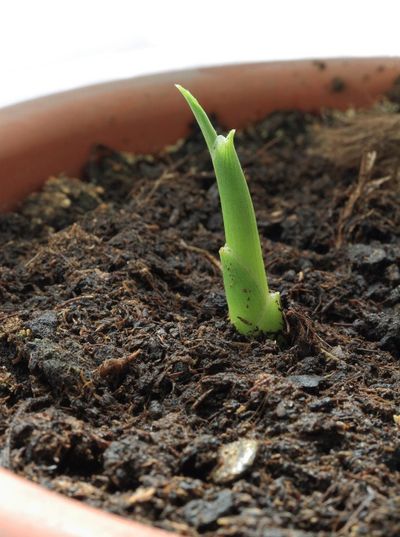This warm-climate plant grows year-round in USDA plant hardiness zones 9b and above, but gardeners in more northern climates can grow ginger in a container and harvest the spicy roots year-round. Although you can start any time of year, spring is the optimum time for planting ginger in a container. Want to learn about growing ginger in containers? Read on.
How to Grow Ginger in a Pot
If you don’t already have access to a ginger plant, you can purchase a chunk of ginger about the size of your thumb or a little longer. Look for firm, light-colored ginger roots with bumpy little buds at the tips. Organic ginger is preferable, as regular grocery store ginger is treated with chemicals that prevent sprouting. Prepare a deep pot with a drainage hole in the bottom. Keep in mind that the thumb-size chunk may grow into a 36 inch (91 cm.) plant at maturity, so look for a large container. Fill the pot with a loose, rich, well-drained potting medium. Soak the ginger root in a bowl of warm water for several hours or overnight. Then plant the ginger root with the bud pointing up and cover the root with 1 to 2 inches (2.5-5 cm.) of soil. Water lightly. Be patient, as growing ginger in a container takes time. You should see sprouts emerging from the root in two to three weeks.
Care for Ginger in Pots
Place the container in a warm room where the ginger root is exposed to indirect sunlight. Outdoors, place the ginger plant in a spot that receives morning sun but stays shady during hot afternoons. Water as needed to keep the potting mix moist, but don’t water to the point of sogginess. Fertilize the ginger plant every six to eight weeks, using fish emulsion, seaweed extract, or other organic fertilizer. Harvest ginger when the leaves begin turning yellow – usually about eight to ten months. Bring container-grown ginger plants indoors when temperatures drop to about 50 degrees F. (10 C.).
